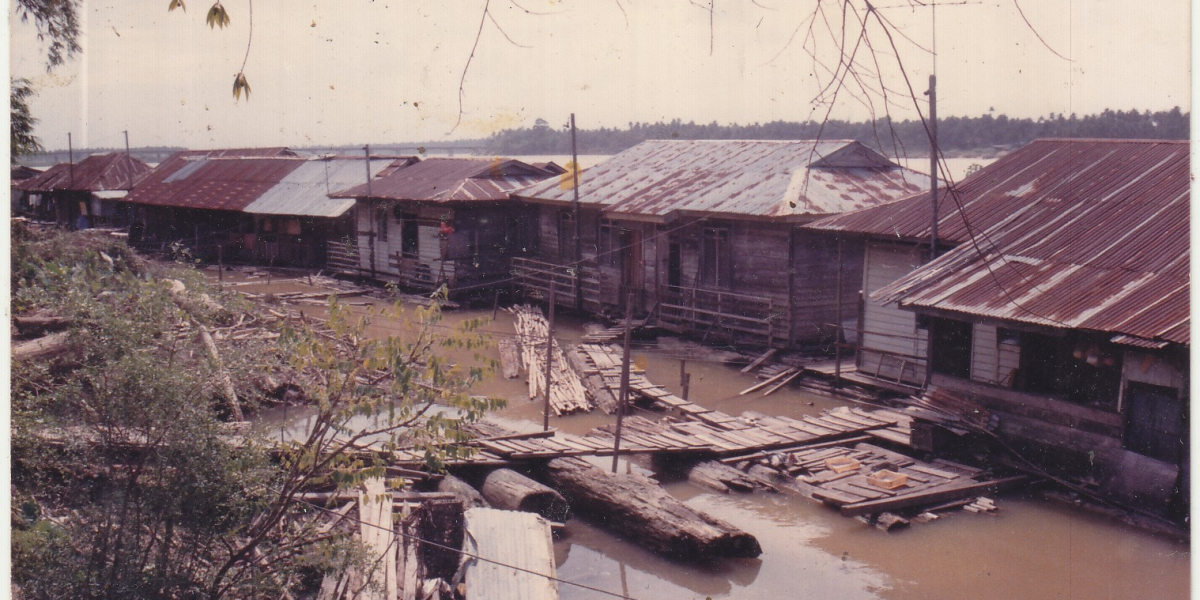Introduction
In the serene town of Temerloh, nestled along the banks of Sungai Pahang, lies a unique architectural wonder known as Rumah Rakit. These traditional houses, built on rafts, have been an integral part of the local community for centuries. In this chapter, we will delve into the historical background, construction techniques, and the significance of Rumah Rakit in Sungai Pahang. We will also explore the challenges faced by the residents and efforts made to preserve this cultural heritage.
Historical Background
Rumah Rakit has a rich history in Sungai Pahang, dating back to the early days of settlement along the river. The concept of building houses on rafts was born out of necessity, as the river environment posed challenges for traditional land-based construction. The floating houses provided a practical solution, allowing residents to adapt to the unique conditions of Sungai Pahang.
The cultural and social significance of Rumah Rakit cannot be overstated. It served as a communal space for families and neighbors to bond, share resources, and forge close-knit relationships. The houses also played a pivotal role in the community's economic activities, such as fishing, farming, and transportation.
Pak Sako's Election Campaign
One notable story that showcases the importance of Rumah Rakit is that of Pak Sako, a political figure who decided to contest in the elections in Temerloh District in the late fifties. To better understand the local community and connect with the residents, Pak Sako chose to stay in a Rumah Rakit. This decision allowed him to immerse himself in their way of life, gain their trust, and ultimately secure their support during the campaign.
Transmigration from Kelantan
In the early 1960s, Sungai Pahang witnessed a significant influx of settlers from Kelantan through a government-led transmigration program. Rumah Rakit became the preferred choice for these new settlers due to their affordability and suitability for the river environment. The transmigration program not only increased the population but also contributed to the development and growth of Sungai Pahang as a vibrant community.
The transmigration program from Kelantan to Pahang has had a significant impact on the population and development of Sungai Pahang. The program was initiated by the Malaysian government in the 1960s to alleviate overcrowding in Kelantan and promote development in less populated areas, such as Pahang.
Population Impact:
1. Population Growth: The transmigration program resulted in a significant increase in the population of Sungai Pahang. Many families from Kelantan relocated to Pahang in search of better living conditions and economic opportunities. This influx of people led to a demographic shift and a rise in the population of Sungai Pahang.
2. Ethnic Diversity: The transmigration program also introduced ethnic diversity to Sungai Pahang. Kelantan and Pahang have different ethnic compositions, and the migration of families from Kelantan brought new cultural and social dynamics to the region. This diversity has enriched the local culture and contributed to a more vibrant community.
Development Impact:
1. Agricultural Development: The transmigration program aimed to develop the agricultural sector in Pahang. The settlers from Kelantan were provided with land and resources to cultivate crops and engage in agricultural activities. This led to the development of new farmlands, increased agricultural productivity, and the growth of the agricultural sector in Sungai Pahang.
2. Infrastructure Development: The transmigration program also spurred infrastructure development in Sungai Pahang. To accommodate the influx of settlers, the government invested in the construction of roads, schools, healthcare facilities, and other essential infrastructure. This development has improved the quality of life for the local population and enhanced access to basic services.
3. Economic Growth: The transmigration program has contributed to the economic growth of Sungai Pahang. The settlers from Kelantan brought their skills and knowledge in agriculture, which boosted the local economy. The increased agricultural production and the establishment of new businesses have created employment opportunities and stimulated economic activities in the region.
Challenges and Considerations:
1. Environmental Impact: The transmigration program has had some environmental consequences. The conversion of forested areas to farmlands for agricultural purposes may have led to deforestation and habitat loss. Balancing development with environmental conservation is crucial for sustainable growth in Sungai Pahang.
2. Social Integration: The successful implementation of the transmigration program required efforts to promote social integration between the settlers and the existing local communities. Encouraging cultural exchange, fostering understanding, and promoting social cohesion are essential for harmonious coexistence and community development.
Construction and Design
The construction of Rumah Rakit is a testament to the ingenuity and resourcefulness of the locals. The house is built on a base structure made of two large round logs, ensuring stability and buoyancy. Bamboo and timber are used for the walls, roof, and flooring, while ropes and rattan strips secure the various components together. The design allows the house to withstand the ebb and flow of the river, ensuring the safety and comfort of its residents.
Lifestyle on the River
Living in a Rumah Rakit presents a unique lifestyle that revolves around the river. The residents engage in activities such as fishing, farming, and transportation, using the waterways as their primary means of livelihood. The sense of community is strong, with neighbors often coming together to assist each other during festivals, weddings, and other important events. The tranquil and idyllic surroundings foster a deep connection with nature and a slower pace of life.
Challenges and Changes
While Rumah Rakit has been a symbol of resilience and adaptability, the residents face various challenges. Environmental factors, such as river erosion and flooding, pose risks to the stability of the houses. Additionally, the lack of modern amenities, such as proper toilets, can be a hindrance to the residents' quality of life. Over the years, efforts have been made to address these challenges, including the implementation of infrastructure projects and community initiatives.
Preservation and Cultural Heritage
Recognizing the cultural significance of Rumah Rakit, there have been initiatives to preserve and promote this unique architectural heritage. Projects aimed at raising awareness, such as exhibitions, cultural festivals, and educational programs, have been organized to showcase the history and charm of Rumah Rakit. Additionally, there have been proposals to establish homestays in the form of Rumah Rakit, providing opportunities for eco-tourism and allowing visitors to experience the rich cultural heritage firsthand.
Conclusion
The Rumah Rakit of Sungai Pahang in Temerloh is not just a collection of floating houses but a testament to the resilience and adaptability of the local community. These unique architectural wonders have stood the test of time, providing a glimpse into the rich history and cultural identity of the region. As efforts continue to preserve and promote this cultural heritage, the legacy of Rumah Rakit will endure, ensuring that future generations can appreciate and learn from the traditions of Sungai Pahang.
In conclusion, the transmigration program from Kelantan to Pahang has had a significant impact on the population and development of Sungai Pahang. It has increased the population, introduced ethnic diversity, promoted agricultural development, spurred infrastructure development, and contributed to economic growth. However, it is important to address environmental concerns and promote social integration to ensure sustainable development and a prosperous future for Sungai Pahang.







